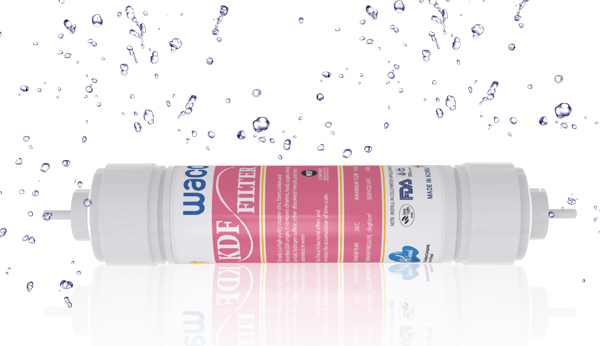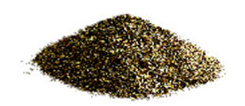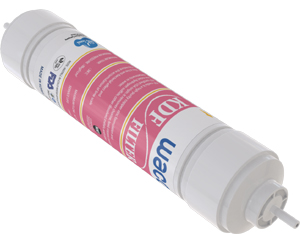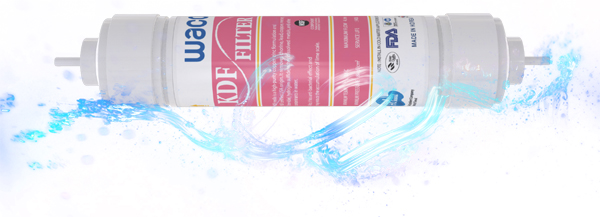KDF FILTER

|
About KDF
Kinetic Degradation Fluxion (KDF-55) Water FiltersKinetic Degradation Fluxion (KDF) is a high-purity copper-zinc formulation that uses a basic chemical process known as redox (oxidation/reduction) to remove chlorine, lead, mercury, iron, and hydrogen sulfide from water supplies. The process also has a mild anti-bacterial, algaecitic, and fungistatic, effect and may reduce the accumulation of lime scale. |
|
KDF process media is used in pre-treatment and primary treatment applications to supplement or replace existing technologies in order to extend system life and to reduce heavy metal contamination, chlorine and hydrogen sulfide. It is often combined with other technologies to achieve superior overall results. Because of its effectiveness at higher water temperatures, it is often used on shower water filtration systems to remove chlorine and other contaminants. The technology was developed by KDF Fluid Treatment, Inc. in the mid 1980s and was patented in 1987. KDF filter media meets EPA and Food and Drug Administration standards for levels of zinc and copper in potable water, and is certified by NSF International to its Standard 61 for drinking water. |

|
What Contaminants Does KDF Remove?KDF process media will reduce or remove chlorine, iron, hydrogen sulfide, lead, mercury, magnesium, and chromium, and may inhibit the growth of bacteria, algae, and fungi.Redox media remove up to 98% of water-soluble cations (positively-charged ions) of lead, mercury, copper, nickel, chromium, and other dissolved metals. While removal rates depend on a number of factors, more than 98% of chlorine is removed by KDF in home water treatment systems (90% in shower water filters due to high flow rate). |
Note: Chart below is based on KDF-55 combined with basic activated carbon filter |
| Arsenic | Bacteria and Viruses |
Bad Tastes & Odors |
Chlorine | Fluoride | Hydrogen Sulfide |
Heavy Metals |
Nitrates | Radon | Sedi | Iron | VOC’s |
| ◐ | ○ | ● | ● | ○ | ● | ● | ○ | ◐ | ◐ | ● | ◐ |
●=Effectively Removes ◐=Significantly Reduces ○=Minimal or No Removal |
How are chlorine, Iron, hydrogen sulfide and heavy metals removed?*Iron removal KDF process mediaRemove iron form water, either alone or in combination with other treatment technologies used at the point-of-entry. KDF process media act as catalysts to change soluble ferrous cations into insoluble ferric hydroxide, which is easily removed by regular backwashing. KDF 85 medium removes more than 90% of iron from Groundwater supplies. |

|
* Hydrogen sulfide removalMedium eliminates H2S by converting the hydrogen sulfide gas to insoluble sulfide, an inert, harmless precipitant. When hydrogen sulfide contaminated water enters the KDF filter, the copper in the KDF media loses an electron and the sulfur and water are formed. The copper sulfide is insoluble in water and can be backwashed off the KDF filter media. Periodic backwashing eliminates accumulations of the precipitant from the media bed. |
* Heavy metals removalKDF 55, KDF 8s and KDF-C media can remove up to 98% of water-soluble cations (positively-charged ions) of lead, mercury, copper, nickel, chromium, and other dissolved metals. When filtered through KDF media, soluble lead cations are reduced to insoluble lead atoms, which are electroplated onto the surface of the media. Other heavy metals bond to the media and may be recovered when the exhausted media pass through a copper smelter. |

|